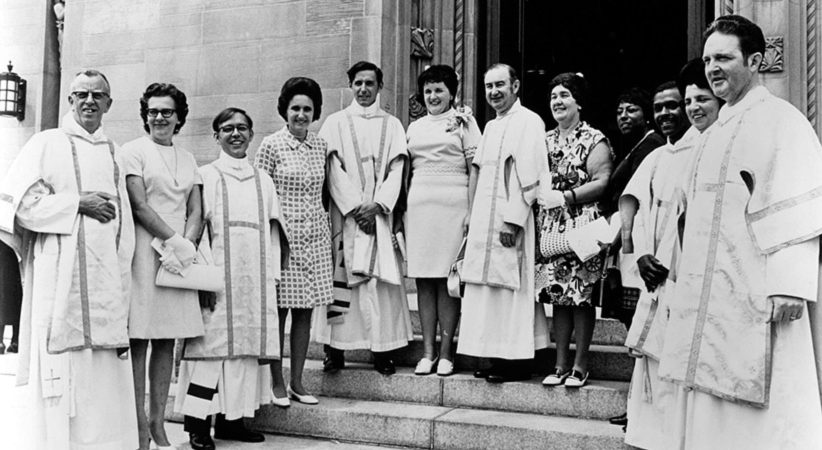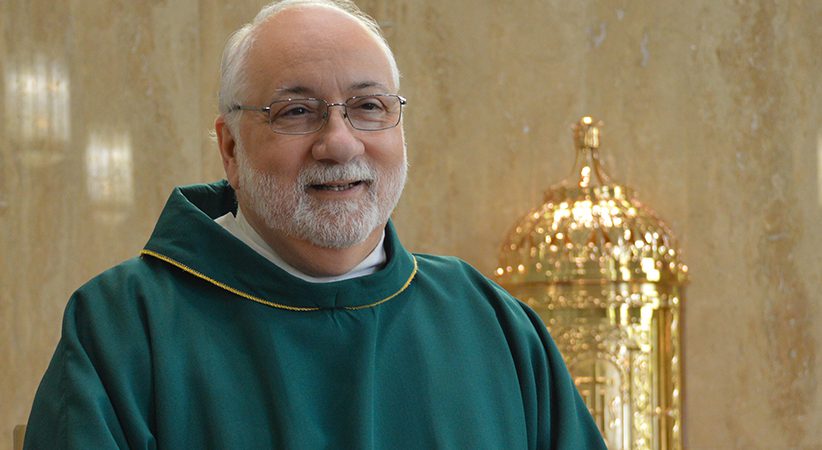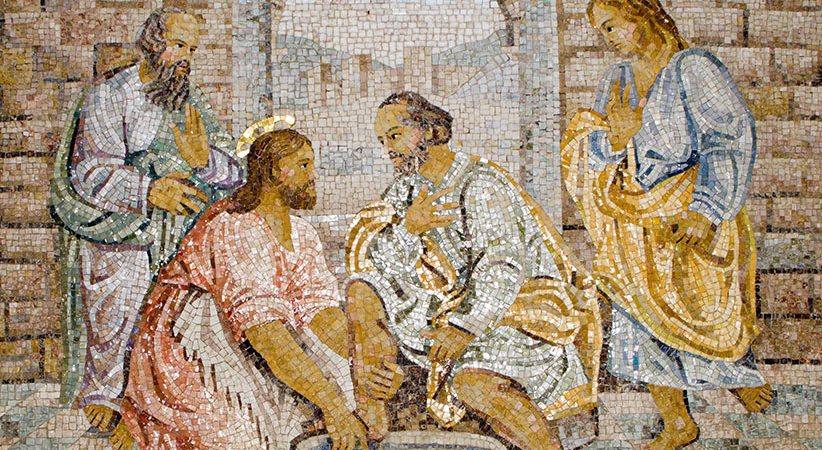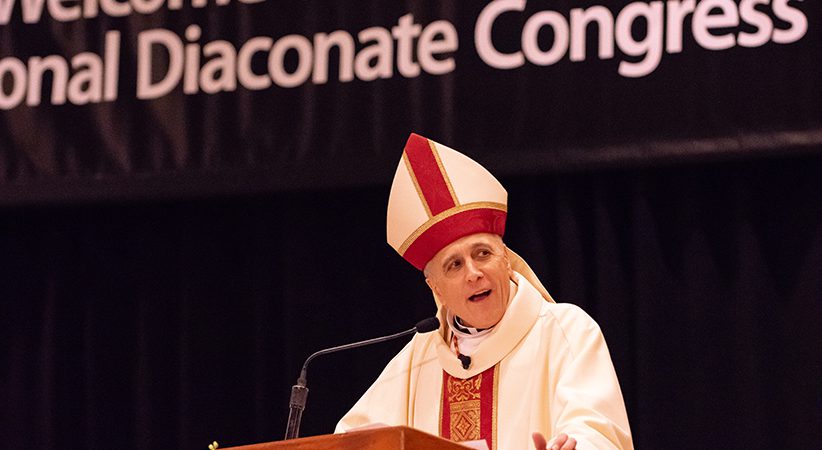50 Years Later: Harvesting the First Fruits
Celebrating the renewal of the permanent diaconate
Deacon Owen F. Cummings 2
In the debates surrounding the First Vatican Council (1869-70), St. John Henry Newman said it takes about 100 years to receive a council. Well, we are just over the halfway mark since the end of the Second Vatican Council (1962-65) and 50 years since the restoration of the permanent diaconate (1968). Vatican II was a great success in the renewal of the Church, and the diaconate has been a great success in the renewal of ordained ministry. There are more than 18,000 permanent deacons in our country today. That is evidence of the Spirit at work in the Church.
Just as there were important tributaries flowing into the river of the Church’s tradition prior to the Second Vatican Council — think of the “new theology” germinating in France and Germany during the 1940s and early ’50s, the liturgical movement, the biblical movement, the ecumenical movement — so the movement to restore the diaconate may be considered such a tributary.
Conversations at the Council
Those who plot the history of the diaconate in our times tell us that conversations about the restoration of the diaconate were going on, especially in Germany before World War II, in the concentration camp of Dachau and in conversations in various theological publications after the war, and the trickle-down effect of these conversations gained momentum in the decades leading up to the council, especially when they were helped along by the great German systematic theologian Father Karl Rahner, SJ, and his student, Herbert Vorgrimler. Part of these conversations dwelt on the need in local congregations for a kind of “middle man” positioned between the priests and the people of the parish. It was thought by many that the diaconate could fulfill this role. Deacons would have, as it were, one foot in the sanctuary and one foot in the ordinary workaday world of the parish community. One other need was making itself felt in the preconciliar period: Bishops in missionary territories and dioceses were stretched to the limit in terms of clergy personnel to serve and enrich the needs of their people.
If we put all of these considerations together, then, arguably, just as Vatican II embraced the renewal movements mentioned above in theology and in ecclesial life, so the council embraced the renewal movement focused on the diaconate. In all probability, the vast majority of bishops who came to Rome to participate in the initial phases of the council had little informed appreciation of the permanent diaconate. As we know, for example, from such detailed accounts as Cardinal Yves Congar’s 2012 publication “My Journal of the Council” (Michael Glazier, $69.95), as well as from the carefully crafted histories of the council that have been published in recent years, theological horizons and perspectives were developed through conversations, lectures, meetings of various conciliar committees and debates.
One fine example of the expansion of theological horizons may be found in the person of Bishop Albino Luciani, who was to become the future Pope John Paul I. The theological perspectives emerging on the floor of the council as well as in the discussions of council theologians and bishops were inevitably a challenge to him and, indeed, to many of the bishops. He made the effort to spend the afternoons studying in his room. Bishop Luciani wrote of his experience: “Everything I learned at the Gregorian is useless now. I have to become a student again. Fortunately I have an African bishop as a neighbor in the bleachers in the council hall, who gives me the texts of the experts of the German bishops. That way I can better prepare myself.” The bishops were back at theology school and found themselves learning not only from theological experts but from their peers, as they generated the 16 documents of Vatican Council II.
Restoring the Diaconate
The Magna Carta of the diaconate is found in Vatican II’s Constitution on the Church, Lumen Gentium (see No. 29). There the council fathers opened the door to the restoration of this particular ministry of service in the liturgy — especially the Eucharist — service to the word and service of charity/administration. Commentators on ecclesiology universally point out that this constitution, supported by the other council documents, helped to move the Church away from a pyramidal self-understanding to an ecclesiology of communion.
The beginning of the constitution tells us that the Church is “like a sacrament or as a sign and instrument both of a very closely knit union with God and of the unity of the whole human race.” This is a very brief expression of an ecclesiology of communion. Within this fresh re-appropriation of the Church as communion, the diaconate was to find its place. Some words of Cardinal Walter Kasper are helpful in this regard: “The Church is seen to exist, not for its own sake but for others: for human beings, for a world in need of unity, reconciliation and peace. The Church is a servant Church. In its broadest sense, then, diaconia is not just one dimension of the Church: it is an essential dimension.”

Barrio de Flores neighborhood of Buenos Aires, Argentina. CNS photo
Before the constitution received its final redaction, the bishops, when questioned about restoring the permanent diaconate for married men, were overwhelmingly positive and affirmative. The conciliar statement was followed up by Pope St. Paul VI in 1967 with the apostolic letter Sacrum Diaconatus Ordinem, presenting general norms for the restoration of the permanent diaconate in the Latin-rite Church. Ultimately, the decisions about the restoration of the diaconate were left up to the local diocesan bishops. The apostolic letter insisted that “such deacons be possessed of no small learning” and “that they at least be endowed with that knowledge which in the judgment of the episcopal conference is necessary for them to carry out their specific functions” (No. 14). The pope went on to specify a portfolio of 11 diaconal functions reflecting the understanding of the Constitution on the Church. And so the diaconate began to flourish.
To enhance our understanding of the diaconate, it may be helpful to group the portfolio of diaconal functions together from the council and from Pope Paul VI into three categories reflecting three central documents from the council: the Constitution on Divine Revelation (Dei Verbum), the Constitution on the Sacred Liturgy (Sacrosanctum Concilium) and the Constitution on the Church in the Modern World (Gaudium et Spes). From Dei Verbum comes the diaconal ministry to the Word — immersion in the sacred Scriptures, preaching and teaching. From Sacrosanctum Concilium comes the diaconal ministry to the liturgy/Eucharist. From Gaudium et Spes comes the diaconal ministry of charity/administration/service to the Church and the human community more generally. In many ways the permanent deacon represents the sacramental expression of the central meaning of these three key conciliar texts.
Finding Our Way

Deacons began to appear gradually and then more rapidly throughout most of the dioceses of the American Catholic Church. In the beginning, it would be fair to say that programs of preparation — human, spiritual, pastoral, academic — were not particularly well-resourced. This was something new, and dioceses were taking baby steps — but very good baby steps — to restore the order of deacons. Today, of course, we have the 1998 Vatican texts Basic Norms for the Formation of Permanent Deacons and the Directory for the Ministry and Life of Permanent Deacons.
We have learned well as the restoration of the diaconate continues to be developed in our country. We have learned the importance of integrating the four essential dimensions of formation: human, spiritual, pastoral and academic. The U.S. Conference of Catholic Bishops regularly collects statistics on the diaconate, and the statistics demonstrate the portfolio of tasks involving deacons. In their ministry to the word, deacons are involved in preaching, RCIA and adult theological education. In their ministry to the liturgy/Eucharist, deacons assist the priest/bishop in the celebration of the sacraments and become, in a special way, custodians of the Eucharist. In terms of their ministry of charity/administration/service to the Church and to the wider human community, deacons are involved in the following areas: religious education in parishes and schools, youth ministry, church administration, hospital ministry, prison ministry and the list could go on. The evangelizing witness of the Church would be immensely poorer without their commitment.
Growth of the Diaconate
It would be fair to say that in terms of numbers the diaconate has flourished more in the United States than in any other country. Why is that the case? There are those who suggest that the diaconate has become a kind of “retirement position” for those men in middle years who have retired from their professions or careers. Younger men, of course, need to be encouraged and, in fact, are encouraged to become deacons, showing to their wives and children, to colleagues in the workplace and to the local worshiping community Christ the Deacon.

There is a degree of truth in the suggestion that retirees often have become candidates for diaconal ordination. There is nothing necessarily untoward about that, especially when one considers that a number of candidates for presbyteral ministry these days may be said to be in “second careers.” There also are those who suggest that it is the scarcity and the diminishing number of priests that has fueled and continues to fuel the diaconate. It would be foolish to deny there is some degree of truth in that position, also. There can be no Church without ministry, and no ministry without Church, and surely bishops are doing nothing heterodox in seeking help to serve the multiplicity of needs in their dioceses through the permanent diaconate.
Again, there are those who suggest permanent deacons impede the growth of lay ecclesial ministers in the Church. If that is true, it would be most unfortunate. If the Church truly is the premier sacrament of salvation in our world, then a parsimonious view of ministry should yield to a much more magnanimous view of ministry as the Church seeks to fulfill her vocation. Perhaps we may go a little further. Could it not also be the case that through the recruitment of men in middle years (as well as younger candidates) and through the present scarcity of presbyteral vocations the Holy Spirit is leading the Church slowly and gradually into a more expansive view of ordained ministry, into a more magnanimous view of ministry? Theologically and ecclesiologically, then, there ought to be no competition among lay ecclesial ministers, deacons, priests and bishops. All are necessary for the building up of the Church, so that the Church can be ever more fully the sacrament of salvation.
DEACON OWEN F. CUMMINGS is academic dean and a professor of theology at Mount Angel Seminary in Oregon.
THE DIACONATE IN THE EARLY CHURCH

It is not until St. Irenaeus of Lyons that the seven wonderful men mentioned in the Acts of the Apostles are called “deacons”: Stephen, Philip, Prochorus, Nicanor, Timon, Parmenas and Nicholas. Apart from some details about Stephen and Philip, we know nothing about these men who, if they were not actually known as deacons in the early Church, certainly performed diaconal activities.
The pastoral letters of St. Paul also refer to deacons, but it is impossible to distinguish their roles from those of presbyters and bishops. St. Ignatius of Antioch holds deacons in very high regard. In his letters, they are understood to be sacraments or icons of Christ the Servant.
We find deacons in the early Church mentioned in many places. Their ecclesial roles vary from Lawrence of Rome, whose great charism was concern for the poor and for the “peripheries” — to use the language of Pope Francis — to Callistus, who was elected bishop of Rome over the much better-known and educated Hippolytus in the third century, to the great Ephrem of Nisibis, the fourth-century deacon and wordsmith who has been compared to the writer Dante.
Deacons generally were known as the assistants of the bishop both in liturgical matters — for example, in Christian initiation and the distribution of the Eucharist — and in more social and charitable matters.
After the Edict of Milan in A.D. 313 under Emperor Constantine, the Church ceased to be persecuted and began to expand rapidly. This expansion necessitated the celebration of the sacraments — especially the Eucharist — being delegated by the local bishop to increasing numbers of presbyters/priests to serve the growing needs of the Church. Gradually, deacons came to be seen as assistants to the presbyters, and more gradually the diaconate came to be seen as a step upward toward the presbyterate. The diaconate faded from the stage. However, deacons never quite disappeared from the Church.
One thinks of Cardinal Reginald Pole, who was the papal delegate and a deacon at the Council of Trent during the 16th century, and of Cardinal Antonelli who remained a deacon and who was prominent during the pontificate of Pope Pius IX (1846-78).





Comments are closed.